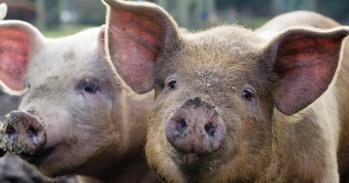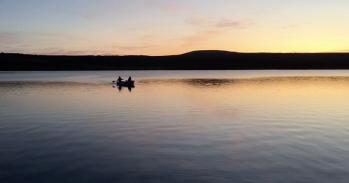A new study suggests the TV dinner is the evolutionary next step in the history of dining.
A new study suggests the TV dinner is the evolutionary next step in the history of dining.
A new study suggests the TV dinner is the evolutionary next step in the history of dining.
Fast food, TV dinners and the microwave meal are the natural consequence of hundreds of thousands of years of human evolution, according to research by a Cambridge University archaeologist.
A new analysis by Professor Martin Jones suggests that while some may see the TV dinner as a radical break from the traditional family meal, in fact it is just another logical step in the long history of dining. Furthermore, the reaction against it is probably nothing new, either.
Just as our ancestors gathered around campfires in ancient times to share food and tell stories, Professor Jones says, modern humans use the TV or radio as a "virtual campfire" that feeds stories and information to them as they eat.
The unusual theory forms the conclusion of his new book, "Feast", in which he uses archaeological evidence from sites around the world to explain why humans habitually sit together peacefully over food while other species find it impossible.
In it, he argues that early humans had to co-operate when hunting or gathering food to respond to changes in their environment. Gradually, as a result of the growth of the human brain and other biological changes, they developed the behavioural tendency to share the benefits of that co-operation in the form of a meal.
The meal around the campfire or the hearth then became a point of ever more complex social exchange, where stories were told and information could be passed around. Professor Jones argues that nowadays our social networks have widened on a global scale, and because we receive information about that global network through the TV, it is natural that we should gather there to share our food.
Earlier scholars have pointed out that in the past, the food and context at private or family meals often reflected local or community values, while theatrical affairs like feasts tended to flaunt the features of a much wider social network, such as an empire. The archaeological record of cuisine, however, shows that over time these different styles of eating drew closer together. Nowadays, technology and communications mean the wider global network enters into individual homes and family life. When we eat, Professor Jones concludes, the two collide in the form of the TV dinner, or a Drive-Thru meal eaten while listening to the car radio.
"As a parent who tries to encourage his children to site around the table for meals rather than watch the TV, it was a surprising conclusion to reach," Professor Jones says.
"People are naturally concerned about the dysfunctional aspect of the TV dinner, but if you look at the archaeological record, there has been similar social unease every time our dining habits have changed. The 'traditional' dining room setting about which people are so nostalgic now is actually a construct of the 19th century to which people struggled to adjust in a similar way at the time.
"One of the myths that lurks in the background with the TV dinner is that there was a golden age in the past when meals were more sociable affairs. In fact, evidence shows that life has always been difficult, and one of the characteristics of humans is that we change our approaches to things and go down different paths - some of which seem dysfunctional and make people feel uncomfortable at the time."
Evidence of humans struggling to adjust to new dining habits goes back much further than the 19th century. Skeletal evidence from thousands of years ago, when humans began to make the transition from hunter-gatherers to farmers and drastically changed their eating habits as a result, shows that the process was far from easy.
Professor Jones looked for evidence of malnutrition in the remains of 75 skeletons from a site at Hambledon Hill, in Dorset, dating back to 3,500BC. The data was compared with the remains from a Roman cemetery half as old in nearby Poundbury. The people who gathered at Hambledon Hill were a mix of farmers and hunter-gatherers, but by the time of the population at Poundbury, farming settlements characterised the community's lifestyle.
The comparison throws up some surprising results. At Hambledon Hill, 15 per cent of the skulls bore traces of anaemia - which is often caused by lack of a balanced diet - while 28% of the Roman period skulls had the same symptoms. The same pattern occurs when one searches for dental defects indicative of malnourishment, and similarly Bronze Age farmers were on average 6cm shorter than their hunting ancestors.
"The evidence indicates that early in the history of settled farming there was sometimes more poverty and hunger than in the time of hunter-gatherers," Professor Jones says.
"If we had met those early farmers struggling to find enough food to live, they would have talked nostalgically about the good old days of hunting in the same way that we speak about the old family dinner around the dining table.
"It may not be too long before people are nostalgic about TV dinners and hamburgers and fries in the same way. Within my time I can see my children's generation developing another method of eating based around the artefacts that define their culture - perhaps the computer or the mobile phone. It may not be too long before we talk wistfully about the good old days of eating around the television."
This work is licensed under a Creative Commons Licence. If you use this content on your site please link back to this page.





